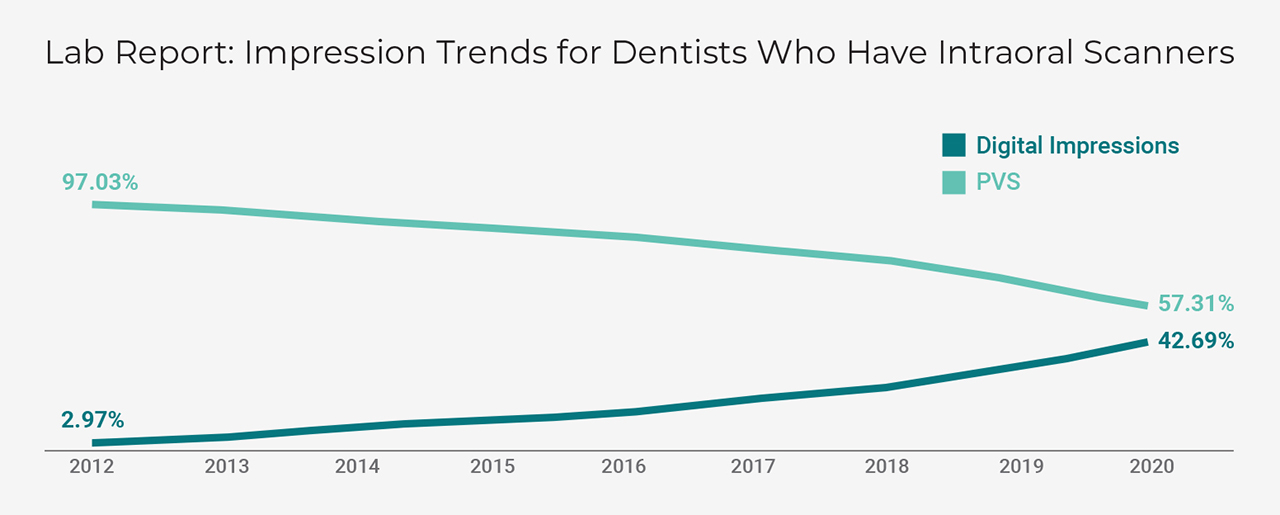REFERENCES
- Kim C, et al. Efficient digitalization method for dental restorations using micro-CT data. Sci. Rep. 2017; 7: 44577. doi: 10.1038/srep44577.
800-854-7256 USA
Through micro-CT scanning, your cases can benefit from the precision of digital dentistry.


Pity the poor plaster model. For decades it stood as the standard by which dental restorations were designed and checked for fit before cementation. Dental offices and dental schools were decorated with them, and it seemed as though the plaster model was the workhorse of the entire industry. But things have changed.
Technology has propelled dentistry into the digital age and, yes, the once-proud plaster model has become obsolete. The new state of the art has relinquished our former workhorse to the annals of dental history alongside wooden teeth.
The stone model’s fate was sealed in early spring of 2017, when Korean researchers published a study proposing “a novel and efficient method to obtain the digital impression for dental restorations by use of micro-CT scanning of a conventional dental impression.”¹ At around the same time, Glidewell engineers independently initiated a study of the capacity for CT scanning to make a dramatically positive impact on the quality, accuracy and speed of dental restoration manufacturing. Their findings, similar to those uncovered by the Korean researchers, confirmed that micro-CT scanning incoming impressions empowered Glidewell to deliver:
The excellent news for dentists is that virtually nothing about their current impression-taking process needs to change in order to take advantage of the improved accuracy that micro-CT scanning affords. Dentists can continue to take elastomeric impressions and send cases to Glidewell as they always have. In return, Glidewell customers can receive restorations so precise that the traditional plaster model is no longer needed.
Instead, the process of checking the fit of returned restorations takes place online in a streamlined, user-friendly process called the Virtual Plaster Experience (VPX). Instead of a brittle, inexact plaster model, dentists will receive a high-precision digital model based on the CT-scanned image of the original impression (with a copy of that model saved in the cloud for future reference or in the unlikely event of a remake). In the end, model-free restorations are produced faster, more consistently, and without the natural error stack-up that plagues more conventional laboratory processes.
An elemental component of Glidewell Intelligent Manufacturing, micro-CT scanning enables Glidewell to take a clinician’s elastomeric impressions and immediately convert them into digital files. Restoration production then commences using a virtual study model within a design environment enhanced by artificial intelligence, before culminating in a computer-enhanced robotic milling and quality control process. And as an added health and safety benefit in the era of COVID-19, the nearly hands-free process all but eliminates exposure to potentially pathogenic physical impressions or study models.
One is unlikely to find a dentist who has avoided the frustration of trying to use error-prone plaster models to verify a crown’s fit. The requisite perfection of the powder-to-water ratio and the inevitability of human variables suggest that such models will in some way be compromised somewhere between impression and delivery. But now, with VPX, dentists will experience restorations that fit with precision beyond what was once believed possible.
Glidewell internal data has indicated an increasing trend toward digital case submissions (from 20% in 2012 to 32.3% in 2020). However, in 2020, the majority (67.7%) of Glidewell customers continued to send physical impressions. Among dentists who have intraoral scanners, physical impressions still tipped the scales last year, with 57.3% of case orders including physical impressions.

Clearly, physical impressions will continue to play a significant role in dental cases — but, as a portal to digital dentistry, CT scanning of those impressions offers sharper, more well-defined study models, all in the convenience of the virtual realm.
The French poet Victor Hugo once wrote, “There is nothing more powerful than an idea whose time has come.” At Glidewell, we believe that sentiment is applicable to digital dentistry in general, and specifically with model-free restorations. The requisite technology exists at Glidewell today, and the true beneficiaries of this evolution in digital dentistry are the dentists we serve and their patients.
If you’re interested in experiencing the advantages of model-free restorations, we invite you to send a case today.
REFERENCES
Send blog-related questions and suggestions to hello@glidewell.com.




